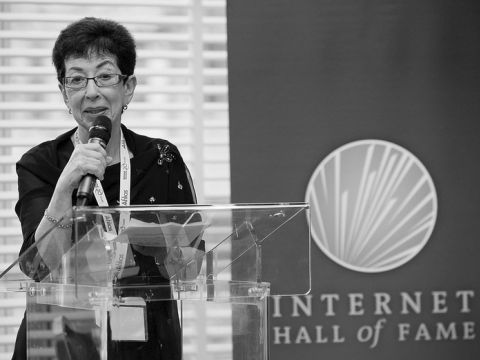From the late 1980s until 2000, Hafkin worked for the United Nations Economic Commission for Africa (UNECA), the branch of the United Nations focused on economic development in all countries in Africa. While working in Ethiopia, Hafkin began to notice that information was largely inaccessible on the continent. She decided to tackle that problem by launching the Pan African Development Information System.
“All the countries of the continent were supplying information to databases and we wanted people to access all the information stored in them,” says Hafkin. “At that time there was not a single public library in Ethiopia.”

One particularly slow exchange of information from Ethiopia to Niger took nine years.
The databases were set up to exchange data through low-orbit satellites, but at the time the satellites didn’t exist. If someone wanted to share the data, they had to fax it or send it through the mail. One particularly slow exchange of information from Ethiopia to Niger took nine years, Hafkin mentions in her Internet Hall of Fame induction speech. The painfully slow exchange of data pushed Hakfin, and her team to get a digital network set up in Africa.
Hakfin began to establish an Internet communication infrastructure in Africa by building email nodes. But the handful of African telecommunications operators at the time were used to exploiting quasi-monopolies, and they weren’t keen on people having other communication options.
“Up until 1995, there were only four companies that had full 24-hour Internet connectivity,” says Hafkin. “It dawned on us that we could influence policy and move forward telecommunications technology.”
Backed up by the UN, Hakfin began breaking down the barriers to telecommunications adoption in Africa by provided advisory services for governments, getting rid of Internet service provider monopolies, and doing away with customs duties on computers. She also helped lift prohibitions on the import of modems. Prior to the law change, her team had to smuggle modems into the continent in their suitcases.
By the time she left her post at the United Nations, the wireline Internet was well established in Africa, and telecommunication technologies were already shifting towards mobile phones. Africa is the fastest growing mobile telecommunications market in the world. Hakfin sees that as a boon for Africans looking to access the Internet thanks to the ubiquity of smartphone.
After retiring from the UN, Hafkin turned her attention improving Internet access for women, a topic she’s wrestled with since her early days as a researcher.
“In 1975 I became extremely frustrated while doing research on women, and having to using typewriters and mimeographs,” Hafkin says. When she first got her hands on a computer, she knew it should be a device accessible to everyone. For the last twelve years, she’s been striving to make sure computers and the Internet are available to every woman in the world.
“The rate of women connected to the Internet in Italy is as low as it is in Kurdistan, I’ve found that Internet use doesn’t correspond with the development of a country,” notes Hafkin.
For the last several years, Hafkin has developed a framework on gender, equality and the knowledge society. She’s finding that in order to get more women connected with technology, technology must be tailored to fit women’s needs. That might be finding ways to make more computer labs accessible to women, gearing education about the Internet toward women, or simply doing a better job of promoting the use of information technology among women.
In the United States, she is troubled by what she calls “terrifically low rates” of women in computer engineering programs. Compared to the rest of the developed world, American women are far less likely to study computer science or hold jobs in the field.
Hafkin’s ultimate hope is that as more women connect with the Internet, study computer science and work in tech, the IT geeks sporting ponytails are just as likely to be women as men.